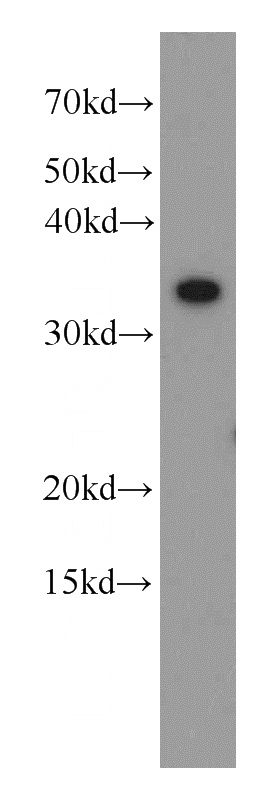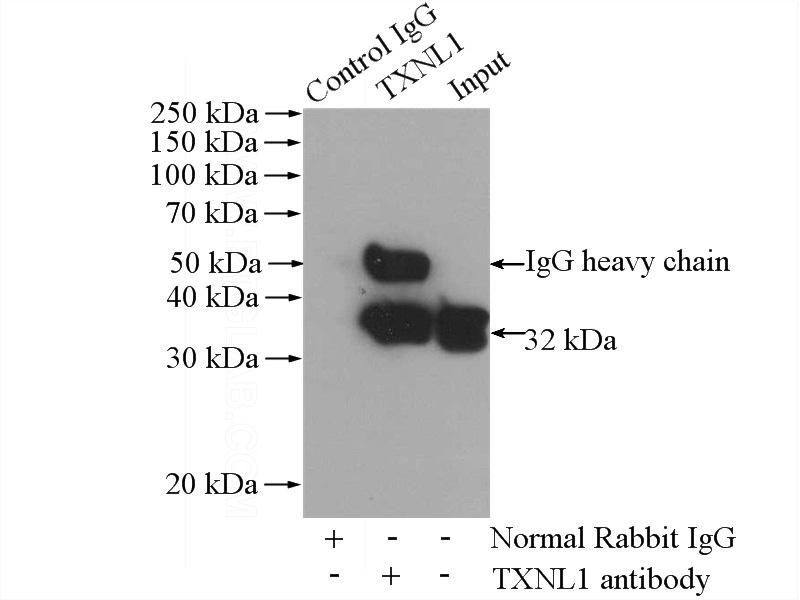-
Product Name
TXNL1 antibody
- Documents
-
Description
TXNL1 Rabbit Polyclonal antibody. Positive IP detected in HL-60 cells. Positive WB detected in K-562 cells, HL-60 cells. Observed molecular weight by Western-blot: 32 kDa
-
Tested applications
ELISA, WB, IP
-
Species reactivity
Human,Mouse,Rat; other species not tested.
-
Alternative names
thioredoxin like 1 antibody; Thioredoxin like protein 1 antibody; TRP32 antibody; Txl antibody; TXL 1 antibody; TXNL antibody; TXNL1 antibody
- Immunogen
-
Isotype
Rabbit IgG
-
Preparation
This antibody was obtained by immunization of TXNL1 recombinant protein (Accession Number: XM_017026093). Purification method: Antigen affinity purified.
-
Clonality
Polyclonal
-
Formulation
PBS with 0.02% sodium azide and 50% glycerol pH 7.3.
-
Storage instructions
Store at -20℃. DO NOT ALIQUOT
-
Applications
Recommended Dilution:
WB: 1:500-1:5000
IP: 1:200-1:1000
-
Validations

K-562 cells were subjected to SDS PAGE followed by western blot with Catalog No:116455(TXNL1 antibody) at dilution of 1:1000

IP Result of anti-TXNL1 (IP:Catalog No:116455, 4ug; Detection:Catalog No:116455 1:300) with HL-60 cells lysate 960ug.
-
Background
TXNL1(Thioredoxin-like protein 1) is also named as TRP32, TXL, TXNL and belongs to the thioredoxin family. It might be involved in the cellular response to sugar starvation stress. The predicted 289-amino acid, 32.3-kD protein has 2 distinct domains: an N-terminal domain, which is 43% identical to human TXN, and a C-terminal domain, which showed no homology to other proteins in the sequence databases(PMID:9473519).TXNL1 functions as an effector of oxidants or redox sensor that couples oxidative stress to endocytosis, by converting redox changes into a specific GDI:Rab5-mediated endocytic response(PMID:17987124).
-
References
- Xu W, Wang S, Chen Q. TXNL1-XRCC1 pathway regulates cisplatin-induced cell death and contributes to resistance in human gastric cancer. Cell death & disease. 5:e1055. 2014.
Related Products / Services
Please note: All products are "FOR RESEARCH USE ONLY AND ARE NOT INTENDED FOR DIAGNOSTIC OR THERAPEUTIC USE"
